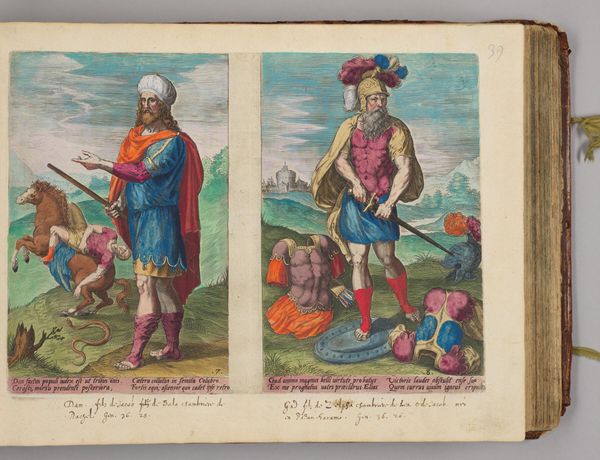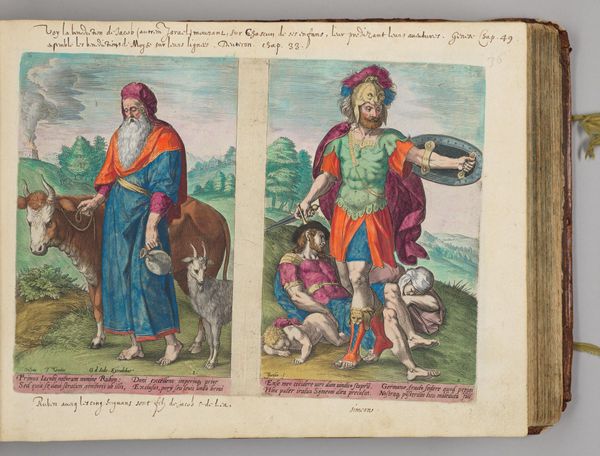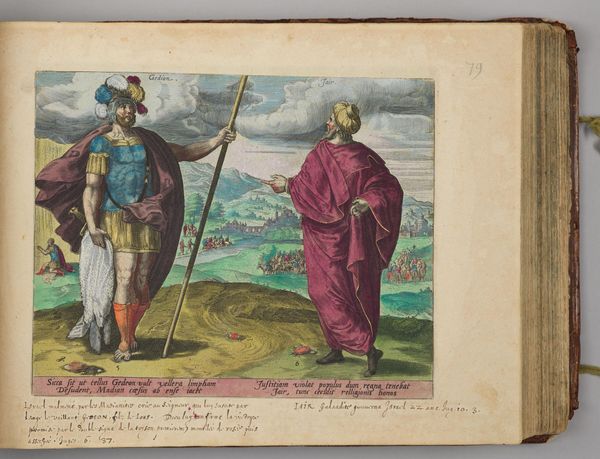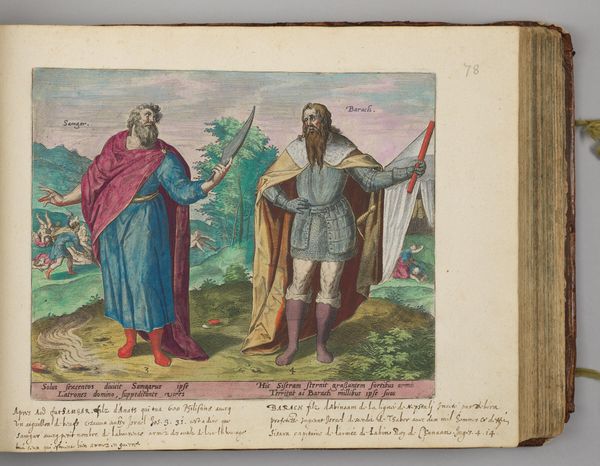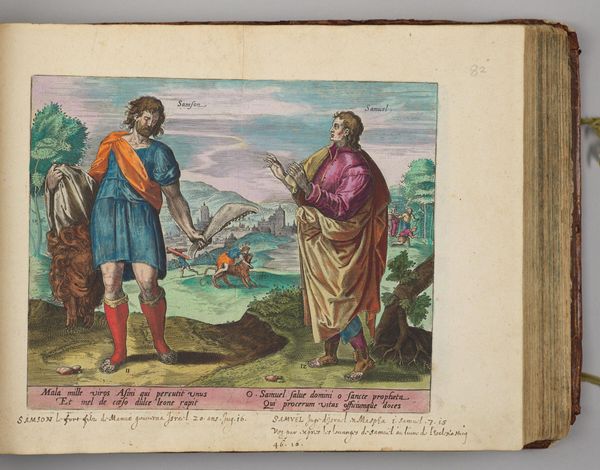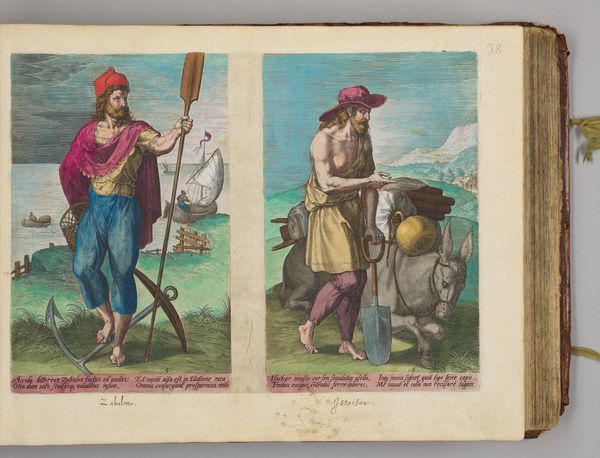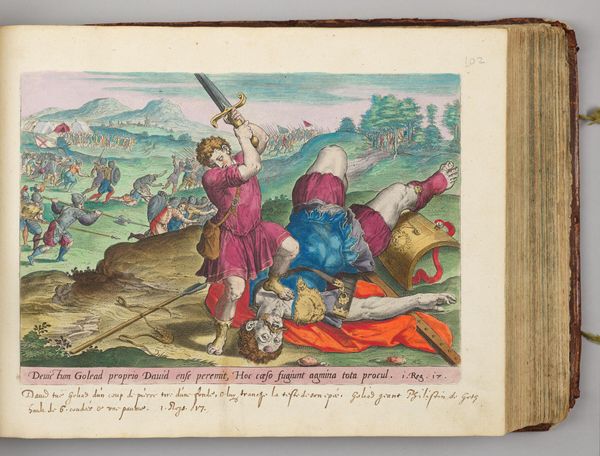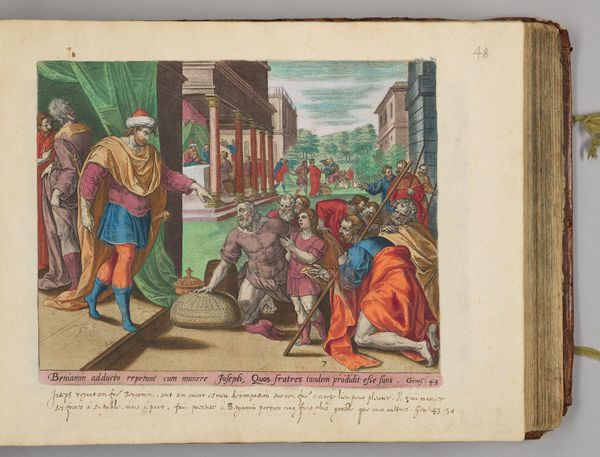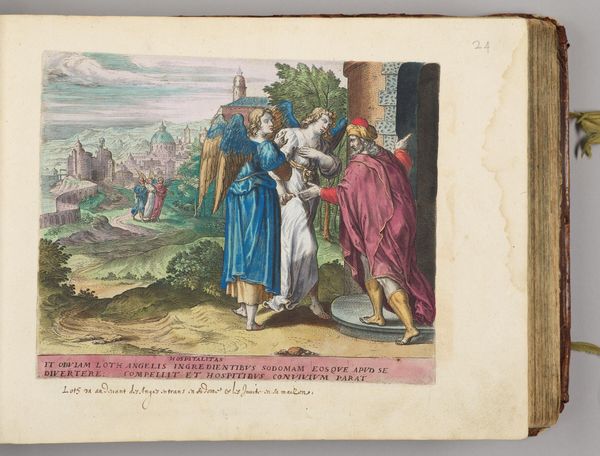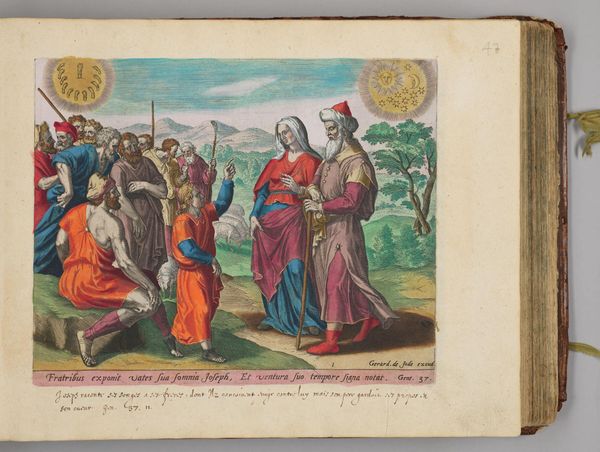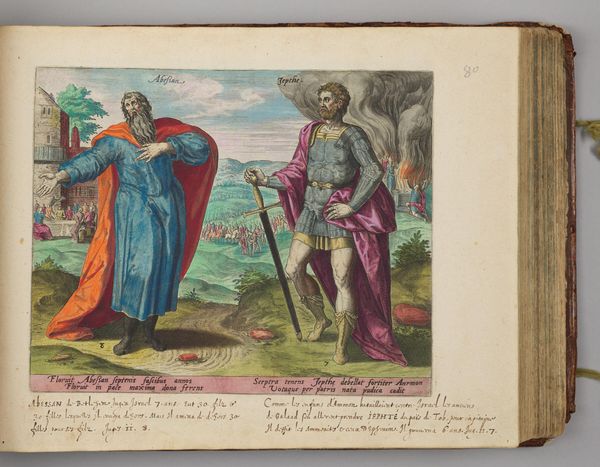
Dimensions: sheet: 27 x 36.4 cm (10 5/8 x 14 5/16 in.) plate: 22 x 30.5 cm (8 11/16 x 12 in.) left (Levi): 22 x 14 cm (8 11/16 x 5 1/2 in.) right (Juda): 22 x 14.1 cm (8 11/16 x 5 9/16 in.)
Copyright: CC0 1.0
Curator: Looking at this marvelous print, we see Johann Sadeler I's "Levi and Juda," created around the turn of the 17th century. Editor: It has a fascinating diptych feel—one side pure battle energy, the other almost regal in its stillness. A strange but compelling contrast. Curator: Absolutely. Sadeler was working within a very specific visual language, translating biblical narratives into images that reflected contemporary social structures and the role of leadership. The symmetry reinforces the idea of balance, but also distinct roles within a society. Editor: What strikes me is the almost theatrical staging, the costuming, the backdrops. It feels less like a historical record and more like a moral play, each character representing a facet of power. Like, is Judah's lion an actual lion, or a symbol? Curator: Well, that's the question, isn't it? The lion certainly symbolizes Judah's kingly status, tying him to a lineage of power. But remember, the image also served to instruct and inspire specific behaviors. Sadeler's art wasn't just about depicting, it was about directing. Editor: So, in a way, he's crafting a brand, a public image for these biblical figures. It's thought-provoking to see how art can shape perceptions, even centuries later. Curator: Precisely. And by understanding that process, we gain a sharper understanding of the socio-political forces that shaped the world we've inherited. Editor: I love that— it gives me much to reflect on.
Comments
No comments
Be the first to comment and join the conversation on the ultimate creative platform.
